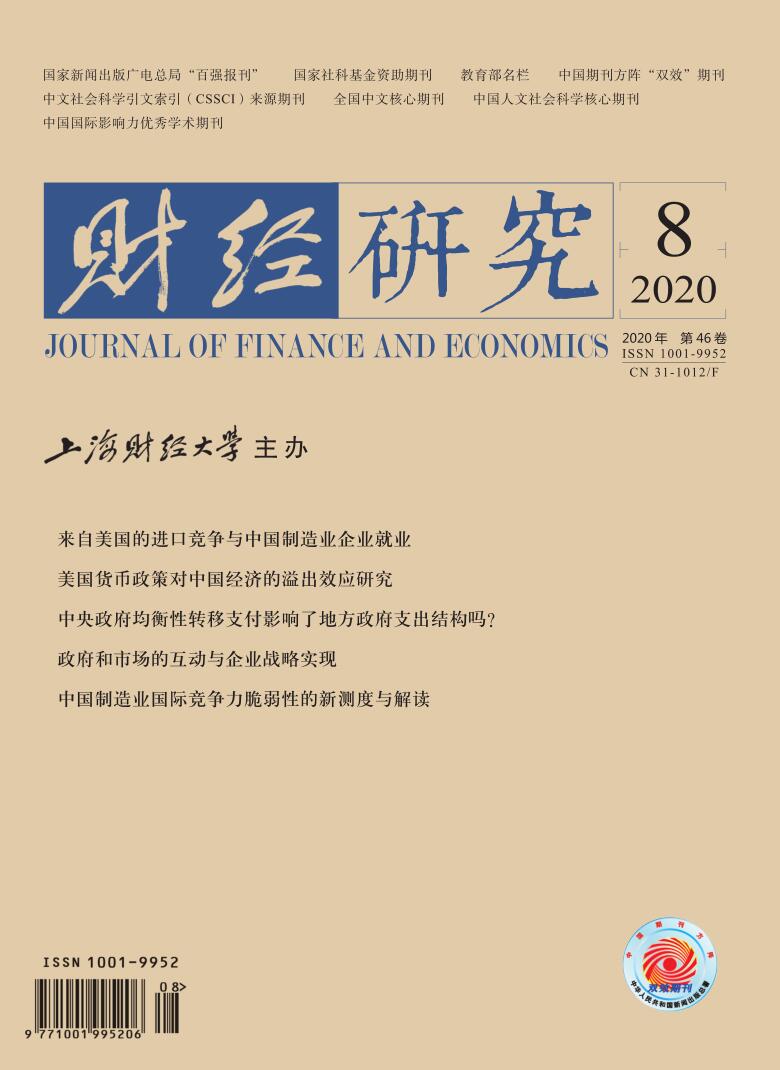稳就业是“六稳”政策之首,对国民经济平稳运行意义重大。在中国实施主动扩大进口和中美贸易摩擦频繁发生的双重背景下,文章基于2000–2013年企业层面的微观数据,实证研究了来自美国的进口竞争对中国制造业就业的影响。研究发现:从总体来看,来自美国的进口竞争显著促进了中国制造业企业的就业增长,且这一影响主要通过促进企业创新和提高企业价格加成两个渠道发挥作用;从上下游关联行业视角来看,上游行业进口竞争对企业就业增长具有显著的促进作用,而下游行业进口竞争对企业就业增长具有显著的抑制作用;从行业层面来看,来自美国的进口竞争对行业总体就业影响不显著,但是会导致就业在企业之间流动,就业主要从大企业、高生产率企业、高人力资本企业和国有企业流出;来自美国的消费品进口竞争和资本品进口竞争对中国制造业企业的就业增长具有显著的促进作用,而中间品进口竞争对企业的就业增长无显著影响。总的来看,来自美国的进口冲击,虽然对中国的总体就业没有产生负面影响,但是会导致国有企业就业下降、就业在不同类型企业之间流动等问题,因此政府应该高度重视这一问题并采取相应措施。
来自美国的进口竞争与中国制造业企业就业
摘要
参考文献
8 Acemoglu D,Akcigit U,Alp H,et al. Innovation,reallocation,and growth[J]. American Economic Review,2018,108(11): 3450−3491. DOI:10.1257/aer.20130470
10 Amiti M,Konings J. Trade liberalization,intermediate inputs,and productivity:Evidence from Indonesia[J]. American Economic Review,2007,97(5): 1611−1638. DOI:10.1257/aer.97.5.1611
11 Autor D H,Dorn D,Hanson G H. The china syndrome:Local labor market effects of import competition in the United States[J]. American Economic Review,2013,103(6): 2121−2168. DOI:10.1257/aer.103.6.2121
12 Autor D H, Dorn D, Hanson G H. The China shock: Learning from labor market adjustment to large changes in trade[J]. NBER Working Paper No.21906, 2016.
13 Autor D H,Dorn D,Hanson G H,et al. Trade adjustment:Worker-level evidence[J]. The Quarterly Journal of Econo- mics,2014,129(4): 1799−1860. DOI:10.1093/qje/qju026
14 Balsvik R,Jensen S,Salvanes K G. Made in China,sold in Norway:Local labor market effects of an import shock[J]. Journal of Public Economics,2015,127: 137−144. DOI:10.1016/j.jpubeco.2014.08.006
15 Bernard A B,Eaton J,Jensen J B,et al. Plants and productivity in international trade[J]. American Economic Review,2003,93(4): 1268−1290. DOI:10.1257/000282803769206296
16 Bernard A B,Jensen J B,Schott P K. Survival of the best fit:Exposure to low-wage countries and the (uneven) growth of U.S. manufacturing plants[J]. Journal of International Economics,2006,68(1): 219−237. DOI:10.1016/j.jinteco.2005.06.002
17 Bloom N,Draca M,Van Reenen J. Trade induced technical change? The impact of Chinese imports on innovation,IT and productivity[J]. The Review of Economic Studies,2016,83(1): 87−117. DOI:10.1093/restud/rdv039
18 Brandt L,van Biesebroeck J,Wang L H,et al. WTO accession and performance of Chinese manufacturing firms[J]. American Economic Review,2017,107(9): 2784−2820. DOI:10.1257/aer.20121266
19 Brandt L,van Biesebroeck J,Zhang Y F. Creative accounting or creative destruction? firm-level productivity growth in Chinese manufacturing[J]. Journal of Development Economics,2012,97(2): 339−351. DOI:10.1016/j.jdeveco.2011.02.002
20 Croizard J L,Ranjan P,Rodriguez-Lopez A. Trade costs and job flows:Evidence from establishment-level data[J]. Economic Inquiry,2015,53(1): 173−204. DOI:10.1111/ecin.12139
21 De Loecker J, Goldberg P, Khandelwal A K, et al. Prices, markups and trade reform[R]. NBER Working Paper No.17925, 2012.
22 Domowitz I R,Hubbard R G,Petersen B C. Business cycles and the relationship between concentration and price-cost margins[J]. RAND Journal of Economics,1986,17(1): 1−17. DOI:10.2307/2555624
23 Feenstra R C,Ma H,Xu Y. US exports and employment[J]. Journal of International Economics,2019,120: 46−58. DOI:10.1016/j.jinteco.2019.05.002
24 Feenstra R C,Sasahara A. The ‘China shock’,exports and U.S. employment:A global input-output analysis[J]. Review of International Economics,2018,26(5): 1053−1083. DOI:10.1111/roie.12370
25 Feenstra R C, Weinstein D E. Globalization, markups and U.S. welfare[R]. NBER Working Paper No.15749, 2010.
26 Fieler A C, Harrison A E. Escaping import competition in China[R]. NBER Working Paper No.24527, 2018.
27 Greenland A,Lopresti J. Import exposure and human capital adjustment:Evidence from the U.S.[J]. Journal of International Economics,2016,100: 50−60. DOI:10.1016/j.jinteco.2016.02.002
28 Haltiwanger L, Foster L, Krizan C J. Aggregate productivity growth: Lessons from microeconomic evidence[A]. Dean E, Harper M, Hulten C. New directions in productivity analysis[C]. Chicago, IL: University of Chicago Press, 2001.
29 Kamal F,Lovely M E. Import competition from and offshoring to low-income countries:Implications for employment and wages at U.S. domestic manufacturers[J]. Journal of Asian Economics,2017,48: 100−119. DOI:10.1016/j.asieco.2016.10.010
30 Kasahara H,Liang Y W,Rodrigue J. Does importing intermediates increase the demand for skilled workers? Plant-level evidence from Indonesia[J]. Journal of International Economics,2016,102: 242−261. DOI:10.1016/j.jinteco.2016.07.008
31 Melitz M J,Ottaviano G I P. Market size,trade,and productivity[J]. The Review of Economic Studies,2008,75(1): 295−316. DOI:10.1111/j.1467-937X.2007.00463.x
32 Mendez O. The effect of Chinese import competition on Mexican local labor markets[J]. The North American Journal of Economics and Finance,2015,34: 364−380. DOI:10.1016/j.najef.2015.09.009
33 Mion G,Zhu L K. Import competition from and offshoring to China:A curse or blessing for firms?[J]. Journal of International Economics,2013,89(1): 202−215. DOI:10.1016/j.jinteco.2012.06.004
34 Schumpeter J A. Capitalism, socialism, and democracy[M]. New York: Harper, 1950.
35 Tybout J R. Plant- and firm-level evidence on “new” trade theories[A]. Choi E K, Harrigan J. Handbook of international trade[M]. Malden: Blackwell Publishing Ltd, 2003.
引用本文
魏浩, 连慧君. 来自美国的进口竞争与中国制造业企业就业[J]. 财经研究, 2020, 46(8): 4-18.
导出参考文献,格式为:





 7861
7861  7688
7688

